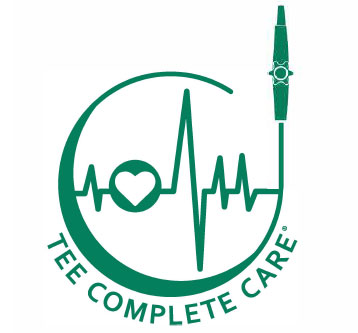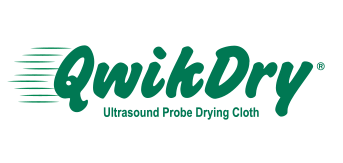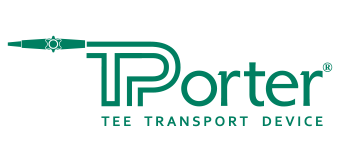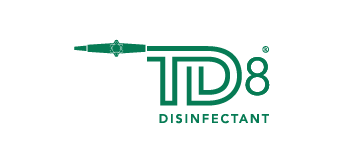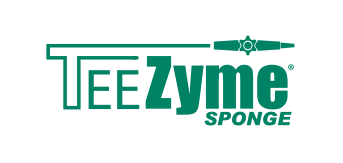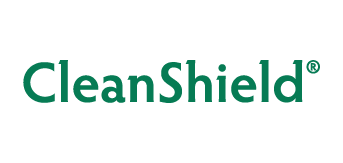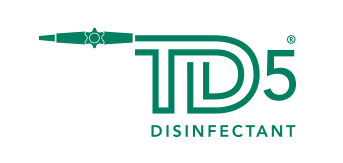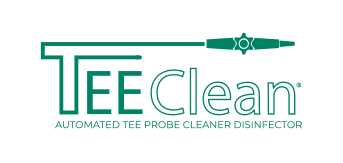A Critical Component to Reprocessing Semi-Critial Devices
Water. It covers about seventy percent of our planet. It makes up roughly sixty percent of our bodies. In the United States, we use over 300 billion gallons of water each and every day (1). But do you know what kinds of bacteria could be floating around inside that glass of water sitting on your desk? Even worse, do you know what is in the water you use to reprocess semi-critical devices, like transesophageal echocardiogram (TEE) ultrasound probes?
Though the water in your glass may be safe enough for normal consumption, it may not be safe enough for many medical applications. As arduous as the high-level disinfection process is and as careful as someone might be to follow all the proper reprocessing protocol to the letter, if a probe is rinsed with contaminated water, all that work goes out the window. Any pathogen in that water can cling to the probe's insertion tube and make its way into the next patient. Due to the fact that medical facilities are typically dealing with people whose immune systems are already under stress or entirely compromised, it is vital that the quality of water meet certain standards to ensure the health, safety, and wellbeing of patients.
What's in your water?
Water contains diverse communities of microbes. It is estimated that one milliliter of river water, about onefifth of a teaspoon, contains millions of microbes (2). The microorganisms found in water samples can be classified into two groups: non-pathogenic and pathogenic. Nonpathogenic, or non-harmful microbes naturally occur in the environment or even on us, but do not make us sick. These microbes pose little or no threat to our well-being; in fact, some are actually essential to our existence (think gut bacteria). On the other hand, pathogenic microbes are dangerous and can make people sick. They can be found in our environment or can be spread from person to person.

Pathogenic microbes can be found in untreated water sources around the world and in the U.S. and include bacterial species of Vibrio, Salmonella, Shigella, and strains of Escherichia coli (E. coli) (3). Parasites like Giardia and Cryptosporidium are also common in drinking water sources around the world (4, 5). These microbes can often come from contaminated water sources, however, many of these microbes live in our water sources naturally. Many waterborne pathogenic microbes cause gastrointestinal symptoms such as diarrhea, vomiting, and stomach cramps (3-6). In severe cases, people can become dehydrated, resulting in hospitalization and even death.
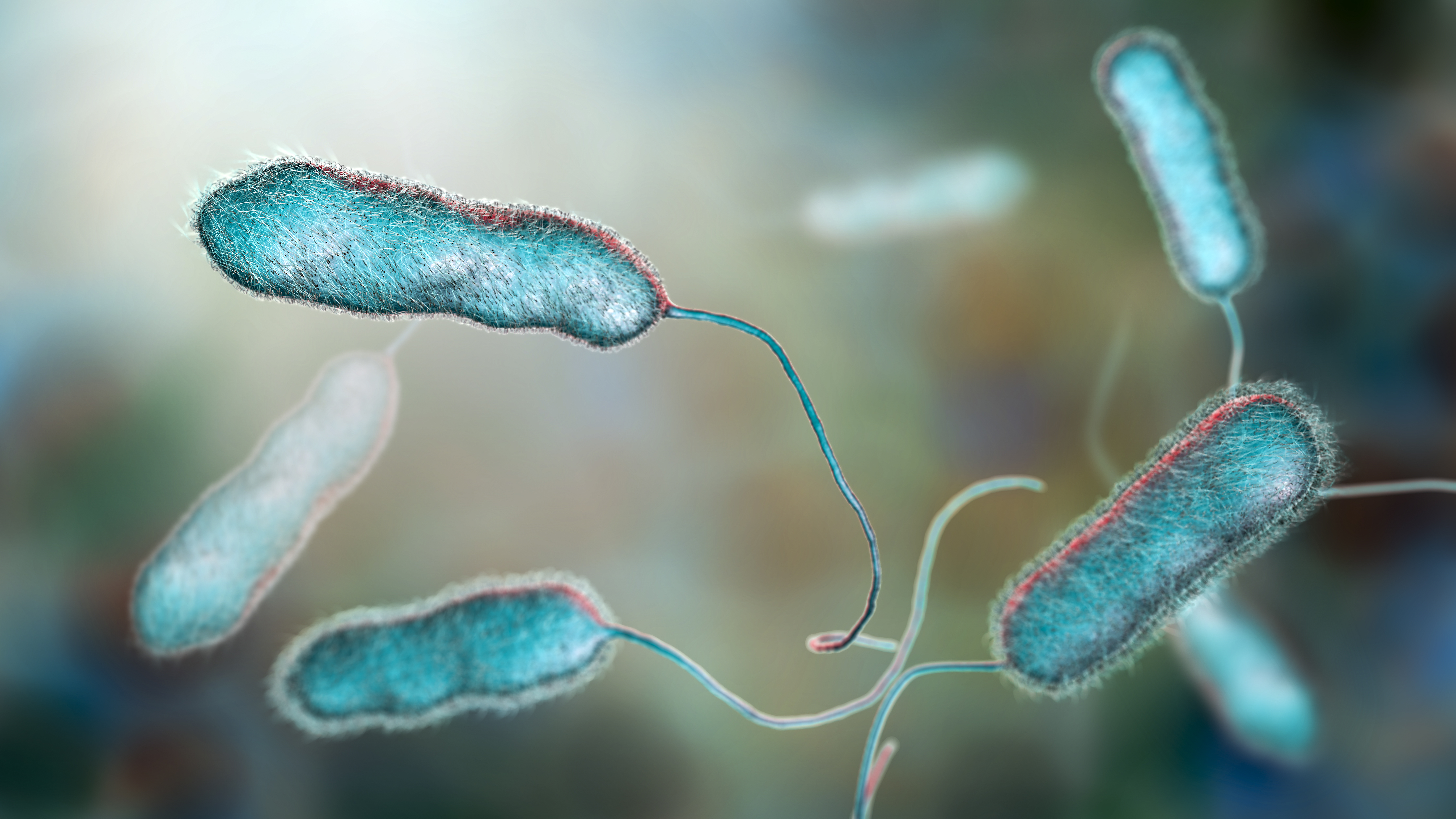
Since pathogenic microbes are commonly found in untreated water sources, governments devote many resources to removing them from municipal water. The treatment process varies from place to place, but generally involves filtration to physically remove microbes and debris from water and chemical treatment to kill any remaining pathogenic bacteria. Before distribution, the water is tested for various pathogenic microbes. In the U.S., drinking water quality is regulated by the Environmental Protection Agency (EPA). The EPA requires water treatment facilities to monitor treated water for turbidity, Giardia, Cryptosporidium, enteric viruses, Legionella, and coliforms (7). Coliforms are bacteria which include species of Escherichia, Klebsiella, Enterobacter, and Citrobater (8) that are used as indicators to determine if the treated water is potentially contaminated. If one or more coliforms are found in the water, it is likely that the water is contaminated with soil or feces and contains pathogenic microbes.
Despite the thorough treatment of drinking water in developed nations, tap water is far from bacteria-free. Tap water contains thousands of bacteria (9). In general, these bacteria are not harmful to healthy people, however, waterborne outbreaks still happen in developed nations. These outbreaks can affect those with compromised immune systems, in particular, because tap water contains potentially pathogenic bacteria called opportunistic bacteria, which do not normally hurt healthy people, but can cause disease in unhealthy or immunocompromised people (10).
Among the most common waterborne bacteria are Legionella pneumophila. People contract Legionella when they inhale contaminated droplets in places like showers or saunas. Legionella can cause a severe form of pneumonia, known as Legionnaire's disease, or a flu-like illness called Pontiac fever (11). Legionella species are naturally found in freshwater environments (11). Legionella generally does not infect healthy people, but the elderly and immunocompromised are at greater risk of infection with up to ten percent of those who contract Legionella ultimately succumbing to their infection (11). While the EPA requires water treatment facilities to test for Legionella (12), the vast majority of Legionella infections do not stem from water treatment facilities, but are the result of bacteria growing within building pipes or faucets (1 O). Potable water has been identified as the source of infection in multiple hospital and community outbreaks (13).
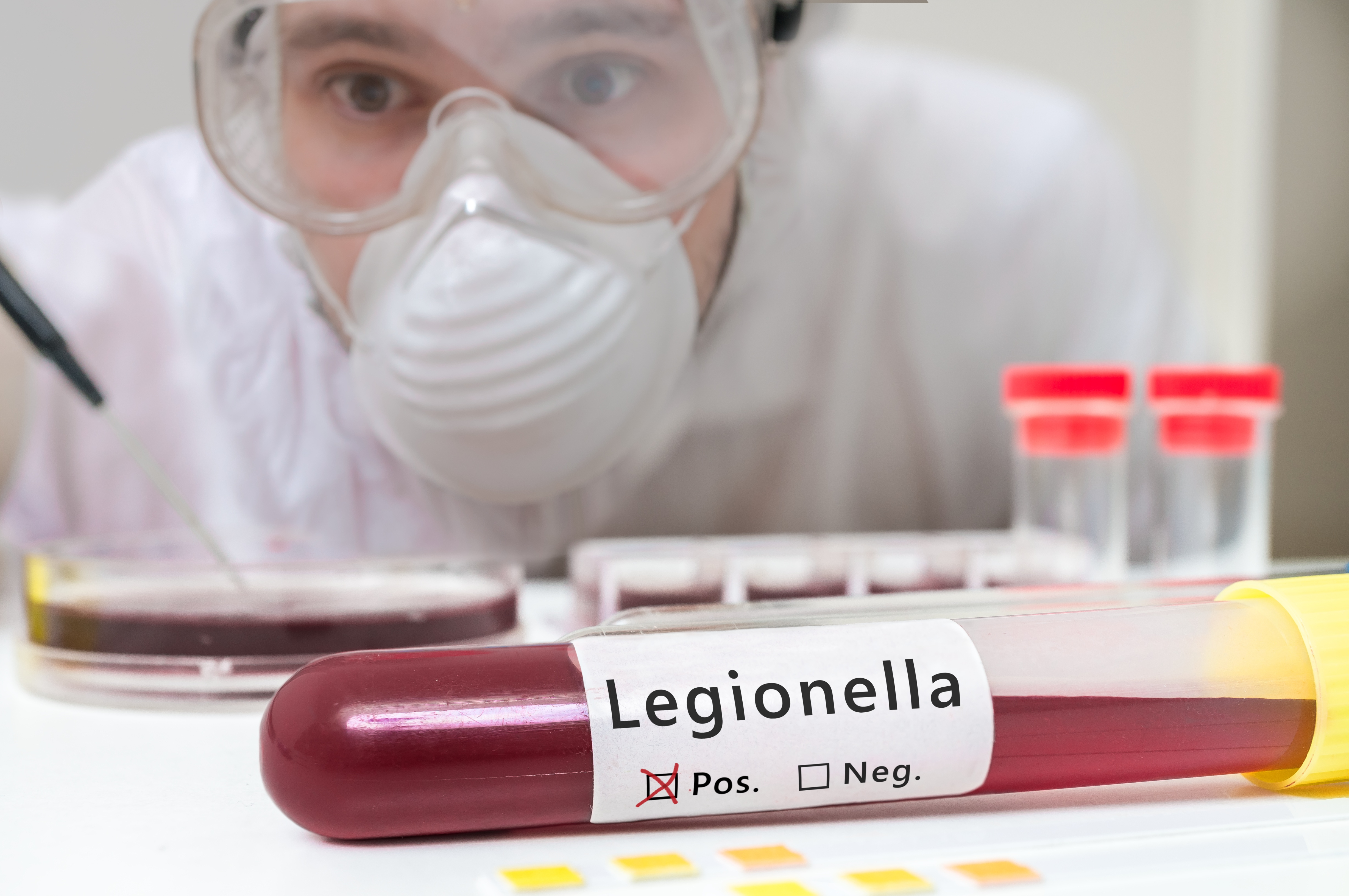
Other opportunistic bacteria found in tap water include Pseudomonas (14) and Aeromonas species (15), nontuberculous Mycobacterium species (16), as well as Ralstonia picketti (17) and Stenotrophomonas maltophilia (14). Pseudomonas species are the most commonly identified opportunistic bacteria in tap water and were identified in 3-6% of tap water samples in a study of hospital water sources (14) and are known to cause lung, blood, and wound infections (18). Aeromonas can cause a variety of infections including gastroenteritis, skin infections, and blood infections (19). Non-tuberculous mycobacteria can cause multiple kinds of infections from wound infections to lung and blood infections (20) that can be very difficult to treat (21). Potable water was identified as the source of non-tuberculous Mycobacterium infections in AIDS patients (22). Mycobacterium can be challenging to remove from water because they are resistant to the typical chlorine concentrations used to treat tap water (23).
Why it matters
Water is used in various ways in healthcare and not all uses are equal. While some water may be used for mopping floors, an application which does not demand perfect purity, other times water is used in ways that require near or even absolute purity.
Water used for hemodialysis, the process of removing toxins from patient blood using a dialysis machine and returning clean blood to the patient's bloodstream, comes into direct contact with a patient's blood. A hemodialysis patient can come into contact with 300-600 liters of water per week (24), as a result, the total number of microbes in dialysis water must remain extremely low. In dialysis centers, tap water is treated using reverse osmosis to remove metal, microbial contaminants, and endotoxins (25). While reverse osmosis is great at reducing microbial numbers in water, storage presents an issue. Stagnant water promotes the formation of biofilms. Studies have identified R. pickettii, S. maltophilia, and Pseudomonas species in samples taken from dialysis water and dialysate (14). Many of the strains identified were multi-drug resistant or extensively drug-resistant (14) meaning they can only be treated with one or two antibiotics (26). Further, microbes such as R. pickettii require very few nutrients to survive, so they can survive in pure water sources for long periods of time. Contaminated dialysis water introduces bacteria directly into the bloodstream, which can be very dangerous and lead to extended hospital stays and an increased risk of death (27).
Water is required for reprocessing reusable medical devices. The Association for the Advancement of Medical Instrumentation (AAMI) summarizes detailed water quality standards for medical devices. The quality and type of water that can be used for reprocessing devices relies heavily on the classification and intended use for the device. Tap water is an acceptable rinsing agent during the cleaning process, as long as it meets the AAMI standards for utility water. The rinse water must not increase the number of bacteria on the instrument. If the device will not be processed any further, a final rinse with water containing <10 CFU/ml bacteria is preferred (AAMI, TIR34). In the case of disinfection by liquid chemicals, which requires water rinses to remove any residual disinfectant, the rinse water should contain <10 CFU/ml bacteria.
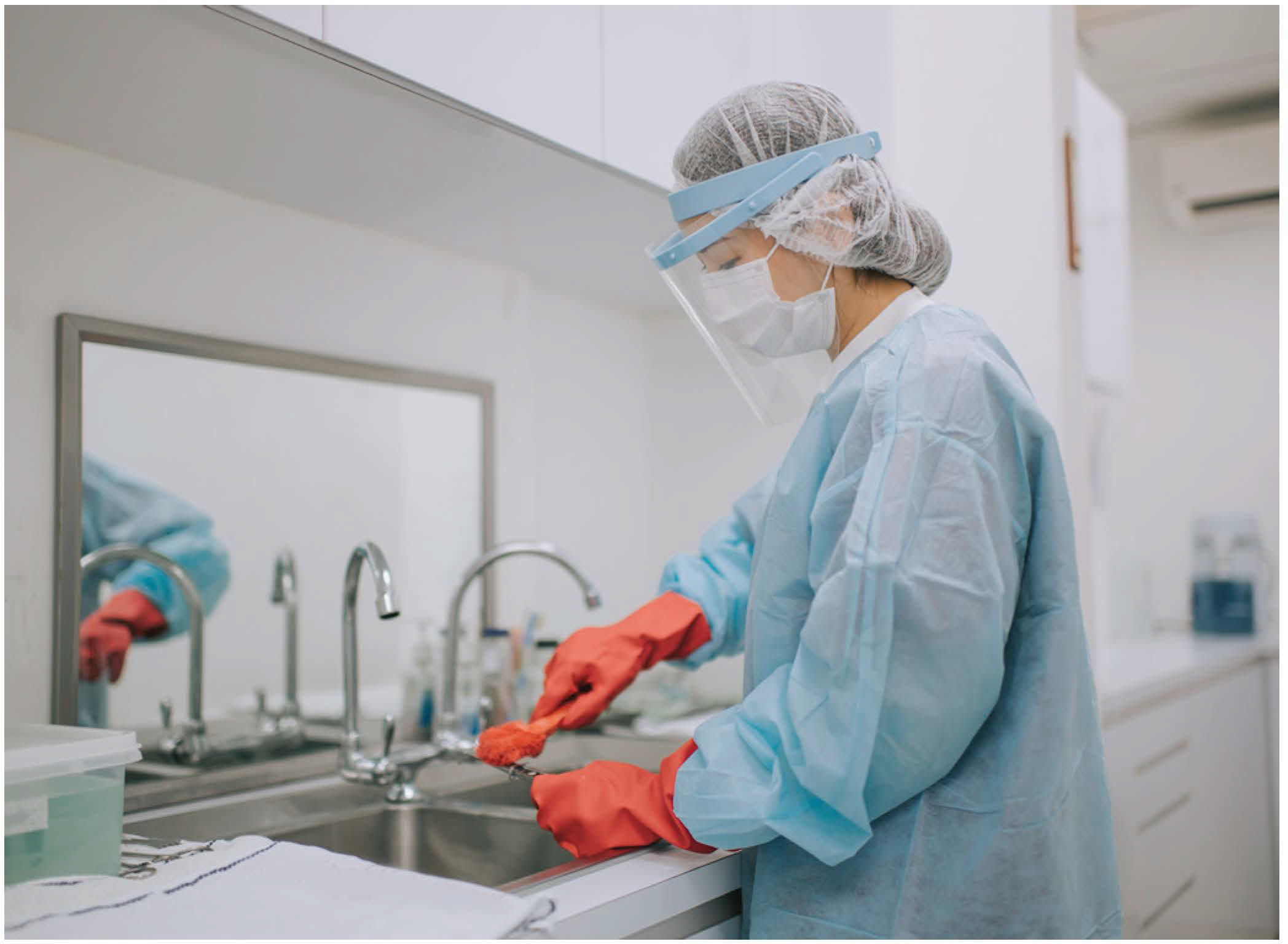
Given the diversity of reusable medical devices, their uses, and contact sites, the consequences of using contaminated water to reprocess devices are vast. Introducing a contaminated device into a patient can lead to infection resulting in protracted hospital stays or even death, especially in immunocompromised individuals. Improper drying of medical devices following rinsing with even slightly contaminated water can lead to the production of biofilms and the multiplication of bacteria on the surface of the device. Bio-films, microorganisms that attach to a surface and create a barrier, are much more resistant to disinfection and killing than single bacteria (28). Thus, rinsing a probe with contaminated water can undermine subsequent cleaning and disinfection procedures.
In one case, S. maltophilia was identified in washes from bronchoscopes, suggesting water should be treated or filtered if used for rinsing semi-critical or critical medical devices after disinfection or sterilization (14). S. maltophilia is a known risk factor for cystic fibrosis patients that undergo bronchoscope procedures, indicating the presence of this bacterium on bronchoscopes may be quite common (14). The same study found S. maltophilia in the tap water used at that facility (14). Though this study did not examine if the strains of S. maltophilia found in the tap water were the same as those identified in the bronchoscope washes, the presence of the bacterium in both sample types suggests the use of poorly filtered water and/or improper drying of bronchoscopes, which promoted the growth of bacteria after disinfection. Whichever the case may be, patients were put at risk and the facility could have been liable for any damages.
Recently, tap water has been proposed as an alternative to normal sterile saline for some wound care. Two metaanalyses reported that cleaning acute wounds (29-31), such as cuts, scrapes or punctures, with tap water results in similar wound infection rates to wounds cleaned with sterile saline (30). It is important to note that immunocompromised patients were excluded from some of these studies (31). lmmunocompromised individuals are most at risk for infections from bacteria in tap water. Therefore, the risk of infection for an immunocompromised individual following rinsing of an acute wound with tap water remains largely unknown.
Keeping patients healthy
Though the opportunistic bacteria described here pose very little threat to healthy individuals, hospitals take care of the some of the most vulnerable populations, therefore, the presence of these opportunistic bacteria in tap water necessitates caution. Further, the identification of antibiotic resistance in opportunistic bacteria from tap water (14, 15) means that if patients are infected, their infections could be difficult to treat. Rather than treatment, prevention of opportunistic waterborne disease is imperative to ensuring patient safety.
Water in hospitals is often used for non-clinical applications such as drinking, showering, patient/staff hygiene, ice, and cleaning patient areas. Generally, in these settings, the bacteria in the tap water are minimal in number and are not coming in contact with sterile sites of the body. Few bacteria can survive stomach acid after being ingested and our skin is designed to be an excellent protective barrier against pathogenic microbes, particularly when they are present in low numbers. Therefore, low levels of opportunistic pathogens in tap water used for these applications can usually be tolerated. Even so, water used in some of these applications can still pose a threat to those with compromised immune systems.
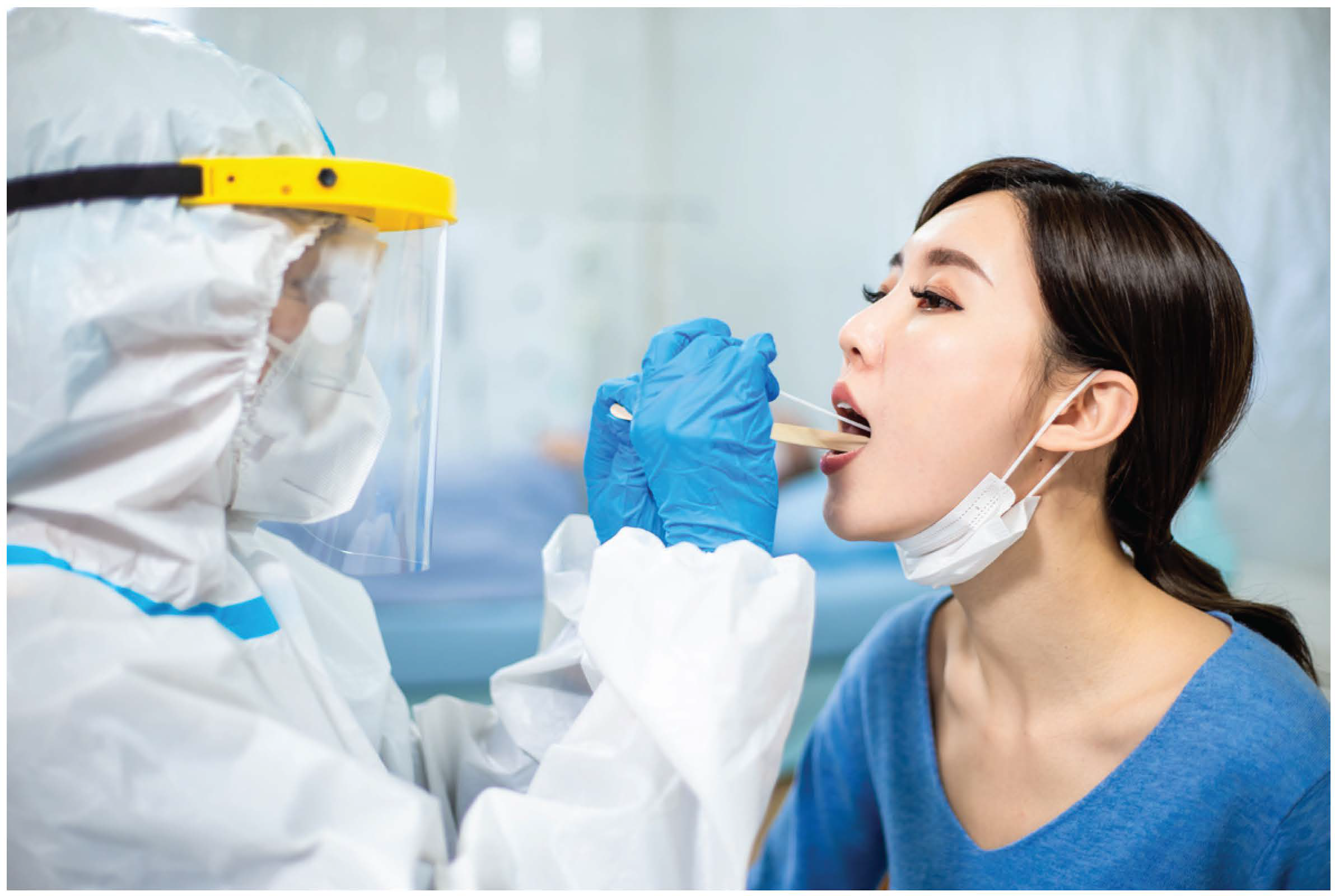
Problems can arise when hospital water distribution systems are not adequately maintained. Many of the bacteria in tap water are able to produce biofilms within pipes and faucets. Therefore, regular maintenance and cleaning of these systems is important to reduce the likelihood that bacteria reach adequate numbers within hospital distribution systems to infect immunocompromised patients or staff. Special attention should be paid to points in the distribution system that aerosolize bacteria such as showerheads, as they can directly introduce bacteria into the lungs, a common site of infection for Legionella, Pseudomonas species, and non-tuberculous Mycobacterium.
Filtration is the method most often used to remove bacteria from water, as it does not require the addition of chemicals which could impede the use of the water for certain applications. Ideally, water should be filtered at the point of use, which will reduce issues associated with storage. The gold-standard for removal of microbes from a solution has been through the use of a 0.2µm filter. Bacterial cells range in size from about 0.3µm-5µm, though sizes can vary widely (32). Therefore, it has been accepted that proper filtration with a 0.2µm filter or smaller should remove most intact bacteria from tap water.
This assumption has been challenged in recent years with the identification of bacteria in surface water (33, 34) and tap water (35, 36) that can pass through 0.2µm filters. For example, R. pickettii is a common contaminant of ultrapure water because it can pass through a 0.2µm filter (37), despite being larger in size. R. pickettii infections in humans are generally thought to be mild and are often overlooked in hospital monitoring, however, severe illness and death from R. pickettii infection have been reported (38). S. maltophilia was also identified in 0.2µm filtered tap water (35). Additionally, 0.2µm filters do not remove viruses or other microbial products or pieces, such as endotoxin, which can cause severe reactions when introduced into the bloodstream. Special filters designed to remove endotoxin may also need to be added to the workflow in these situations.
In light of this, filter sizes smaller than 0.2µm may be required to remove this bacterium, and others from water. One study suggests that 0.1 µm was small enough to remove R. pickettii from pharmaceutical solutions (39). The ability of 0.1 µm filters to remove other bacterial species was not tested. Another study examining bacteria that pass-through filters used 0.05µm filters to capture their bacteria for analysis after passing water samples through a 0.2µm filter, suggesting 0.05 µm may capture additional bacteria missed by 0.2µm filters (36).
Understanding that patient safety is of utmost importance, healthcare facilities must make every effort to keep patients safe from contaminated water. Some devices used for reprocessing semi-critical medical devices make use of filters for their rinse cycles to help guard against waterborne pathogens.
CS Medical's automatic TEE probe disinfectors are all compatible with filters and every TEEClean® Automated TEE Probe Cleaner Disinfector comes equipped with an FDA-cleared 0.005µm water filter. This water filter is so effective that it is actually used for hemodialysis patients. These filters ensure that the water used to rinse TEE probes is free from bacteria, viruses, and endotoxins. By employing products like the TEEClean, healthcare facilities can begin to address water quality issues at the point of use and make good on efforts to stop the spread of healthcare associated infections.
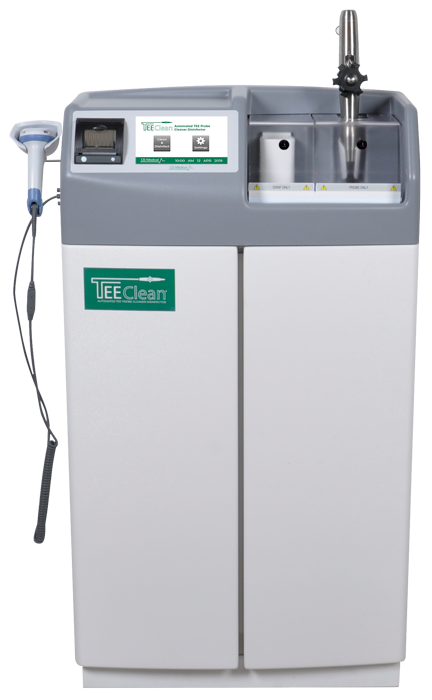
Currently, standards for water quality are set by the Association for the Advancement of Medical Instrumentation (AAMI). AAMI publishes a comprehensive Technical Information Report (TIR) called TIR34- Water for the Reprocessing of Medical Devices (40). While the current AAMI TIR34 guidelines are rather extensive, they will soon be replaced by an updated and more rigorous standard, AAMI ST108 (41). As this new standard goes into effect, healthcare facilities will need to pay more attention than ever to the quality of the water used for reprocessing medical devices as they may be held liable for any shortcomings.
After taking a closer look at the vast number of pathogens and contaminants found in water, it is apparent that water being used in and around immunocompromised patients needs to be more tested and regulated than it often is. Even water used simply for rinsing TEE probes and other semi-critical and critical medical devices needs to be closely monitored. Whenever possible, it is imperative that healthcare facilities filter water and ensure pipes and plumbing are maintained meticulously. The extra effort put in to prevent infection is well worth the up-front cost as it will stop patients from contracting some of these harmful pathogens, keeping them healthy and keeping your facility's reputation untarnished.
So, while the water in your glass is probably perfectly safe for you to drink, it just might not be good enough to use for many medical applications. Ensure its safety for all medical applications at your healthcare facility by maintaining water systems and by introducing filtration at the point of use whenever possible.
References
- https://www.usgs.gov/faqs/how-much-water-used-people-united-states
- https://www.int-res.com/abstracts/meps/v121/p217-226/
- https://www.ncbi.nlm.nih.gov/pmc/articles/PMC2996186/
- https://www.epa.gov/sites/default/files/2015-10/documents/giardia-factsheet.pdf
- https://www.cdc.gov/parasites/crypto/
- https://wwwnc.cdc.gov/travel/diseases/typhoid
- https://www.epa.gov/ground-water-and-drinking-water/national-primary-drinking-water-regulations#two
- https://www.mecknc.gov/HealthDepartment/EnvironmentalHealth/GWS/Pages/Learn%20About%20Contaminants.aspx
- https://www.jstage.jst.go.jp/article/jsme2/30/1/30_MEl4123/_pdf/-char/en
- https://www.epa.gov/ground-water-and-drinking-water/legionella#premise
- https://www.cdc.gov/legionella/fastfacts.html
- https://www.epa.gov/ground-water-and-drinking-water/national-primary-drinking-water-regulations
- https://link.springer.com/article/10.1007/s10096-002-0813-2
- https://pubmed.ncbi.nlm.nih.gov/25173861/
- https://sfamjournals.onlinelibrary.wiley.com/doi/full/10.1111/j.1365-2672.2004.02398.x
- https://journals.asm.org/doi/10.1128/AEM.67.3.1225-1231.2001
- https://www.cdc.gov/infectioncontrol/pdf/guidelines/environmental-guidelines-P.pdf
- https://www.cdc.gov/hai/organisms/pseudomonas.html#:~:text=Of%20the%20many%20different%20types,of%20the%20body%20after%20surgery
- https://journals.asm.org/doi/10.1128/CMR.00039-09
- https://www.cdc.gov/hai/organisms/nontuberculous-mycobacteria.html
- https://www.ncbi.nlm.nih.gov/pmc/articles/PMC7911849/#:~:text=Simple%20Summary,antibiotics%2C%20rendering%20their%20treatments%20unsatisfactory
- https://www.ncbi.nlm.nih.gov/pmc/articles/PMC88641/#B11
- https://journals.asm.org/doi/10.1128/AEM.66.4.1702-1705.2000
- https://www.cdc.gov/healthywater/other/medical/hemodialysis.html
- https://www.ncbi.nlm.nih.gov/pmc/articles/PMC4596525/
- https://pubmed.ncbi.nlm.nih.gov/21793988/
- https://bmjopen.bmj.com/content/3/10/e003587
- https://link.springer.com/article/10.1186/1471-2334-9-56#Sec16
- https://ebn.bmj.com/content/6/3/81
- https://www.cochranelibrary.com/cdsr/doi/10.1002/14651858.CD003861.pub3/full
- https://www.ajemjournal.com/article/S0735-6757(02)00042-6/fuIItext
- https://pubmed.ncbi.nlm.nih.gov/22575476/
- https://www.sciencedirect.com/science/article/abs/pii/S0923250804001287
- https://pubmed.ncbi.nlm.nih.gov/31330365/
- Viable ultramicrocells in drinking water (wiley.com)
- https://pubmed.ncbi.nlm.nih.gov/30942779/
- https://journals.asm.org/doi/10.1128/aem.50.6.1343-1348.1985
- https://www.sciencedirect.com/science/article/abs/pii/S0195670105003713
- https://journal.pda.org/content/53/4/186
- https://www.evoqua.com/en/articles/AAMI-TIR34-water-for-medical-devices/
- https://www.evoqua.com/en/articles/aami-st108-water-for-processing-reusable-medical-devices/
